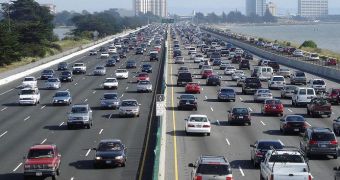Streets are undoubtedly the veins of every settlement, from the most bustling metropolis to the smallest village, and they are also some of the richest sources of pollution. A panel of experts is now looking into ways of converting them into a means of reducing overall carbon dioxide emissions.
Today, streets are their own ecosystem of sorts, featuring restaurants, shops, gas stations, boardwalks and so on. Cars move around on concrete or asphalt, and all the pollution generated through their use and maintenance is somewhat compensated for by trees and plants.
Stoplights and traffic signs also play an important role in how much gas cars consume, and into how much pollution they emit. This is why scientists are now working on a way of making the average street more environmentally friendly.
They say that a total reconsideration of the way we use space in moving around from point A to point B is needed, if we are to help the fight against global warming and climate change.
One of the ways to use streets for this purpose is the change the way right-of-ways are allotted, so that people are more encouraged to walk, use a bicycle, or move via public transportation than driving.
Programming streetlights so that they work in tune, or changing parking patterns, are also among the measures experts believe could alleviate the pollution problem. Planting more trees could help lower air temperature, and also keep pedestrians shaded during sunny days.
Another thing that can be done to improve streets is create permeable pavements. These could help rainwater infiltrate the ground a lot faster than currently possible, and will also feature the added benefit of taking some of the load off sewage treatment facilities.
It is the mission of the City Streets Project to look at all these alternatives, and more, and determine the best way to design and regulate traffic in such a manner that greenhouse gas emissions are lowered.
The team behind this work will include experts in urban design, water use, traffic management, parking policy, human behavior and energy efficiency. They will select a typical street, and then analyze design and use flaws that contribute to increased pollution.
The group will then search for rules, statutes, practices, funding decisions and governance calls that would prevent an attempt of getting rid of those flaws. Education and policy development could be used towards that end, experts say.
This work is a collaboration of the Center for Law, Energy & the Environment (CLEE) and the Center for Resource Efficient Communities, both at the University of California in Berkeley (UCB).

 14 DAY TRIAL //
14 DAY TRIAL //